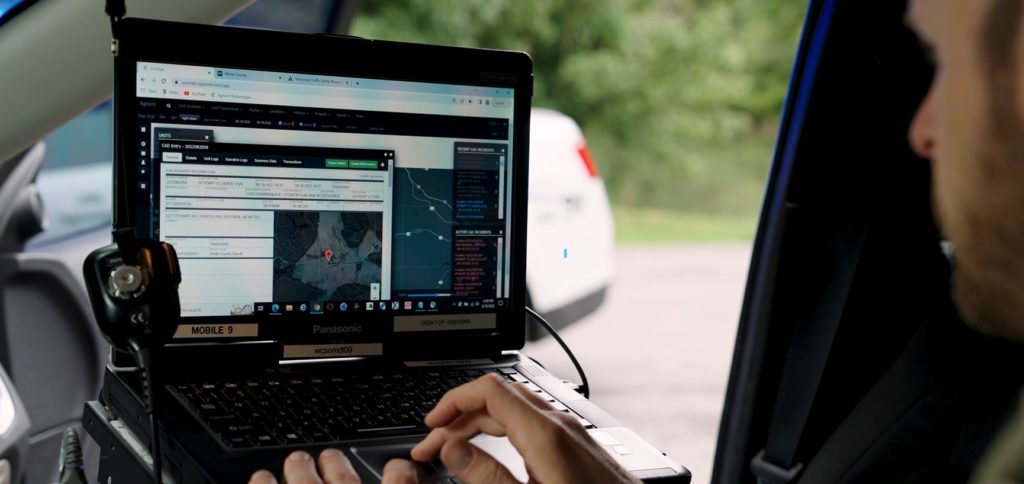
Use of Force Reporting: How to Improve Records of Use of Force
Use of Force Report documentation is a pivotal tool for law enforcement in protecting personal liability, ensuring operational accountability, and promoting public trust. The integrity of these reports not only reflects the fairness and accuracy of law enforcement actions but also plays a crucial role in maintaining transparent and constructive community relations.
This being considered, it’s vital for agencies and officers to have the best possible tools and practices in place to capture the essential details of Use of Force incidents.
In this blog, we’ll explore how records management system (RMS) technology can allow law enforcement to securely document and store Use of Force reports. Additionally, we’ll dig into best practices and practical tips that will equip law enforcement agencies to generate quality, informed Use of Force reports that will elevate their reporting to new heights of professionalism and reliability.
Let’s begin.
The Essentials of Use of Force Reporting
At the core of Use of Force (UoF) reporting, the fundamental task is defining what precisely constitutes a UoF incident. This is pivotal as it sets the stage for what needs to be documented.
A UoF incident can range from physical restraint to the deployment of non-lethal and lethal weapons, depending on the situation and the perceived threat level. The significance of thorough reporting in these instances cannot be overstated; it serves as a record of the decision-making process, actions taken, and the outcomes thereof, which are crucial for internal reviews, legal proceedings, and public transparency.
When it comes to the essentials of a UoF report, accuracy and comprehensiveness are key. Here are some of the critical details that must be captured:
Date, Time, and Location of the Incident
This basic yet crucial information sets the scene, providing a timeframe and location-based context. This information is foundational for any subsequent investigation or review.
Identification and Statements of Involved Officers and Witnesses
Everyone involved, directly or as a witness, should be clearly identified. Their accounts and perspectives add depth to the understanding of the incident and can highlight discrepancies and/or corroborate facts.
Detailed Description of the Event Leading to the Use of Force
This narrative should encapsulate the events that escalated to the point where force was deemed necessary. It includes the behavior of the suspect, the verbal exchanges, and the specific circumstances that justified the use of force.

Type and Level of Force Applied
Detailing the type of force used (e.g., hands, baton, taser, firearm) and the level of force (e.g., minimal, moderate, severe) is essential. This information speaks to the proportionality and appropriateness of the response to the threat posed.
Outcomes of the Force Used, Including Any Injuries
The immediate effects of the UoF, on both the suspect and the officers involved, must be documented. This includes any injuries sustained and the medical attention provided, which are critical for legal and medical follow-up.
The meticulous capture of these details in a UoF report not only aids in the accountability of actions taken but also contributes to the continuous improvement of practices and policies within law enforcement agencies.
Best Practices for Use of Force Reporting
Adhering to best practices in Use of Force (UoF) reporting is essential for maintaining the integrity and effectiveness of all law enforcement operations.
Here are some key practices, each of which are vital for enhancing the quality and reliability of reports:
Objectivity and Clarity
The cornerstone of any UoF report is its unbiased nature and clear presentation. Objectivity ensures that the facts are presented without personal bias, allowing for a fair assessment of the incident. Clarity in documenting details helps in avoiding ambiguities, making the report comprehensible for all stakeholders involved.
Immediate Reporting
Timeliness in reporting UoF incidents is critical. Immediate documentation ensures that details are recorded accurately, minimizing the risk of forgetting crucial information. This practice also aids in the swift initiation of any necessary follow-up actions or investigations.
Creating an Agency-Wide Emphasis on Documentation
Fostering an agency culture that values detailed and meticulous documentation among officers is vital. When thorough reporting becomes a standard practice, it can also become a natural part of the response to incidents. This can, ultimately, lead to higher quality and consistency in reports.
(Note: Some officers and agencies may feel that they don’t have adequate time to thoroughly document all of these aspects. Read here, and more below, on how technology can help make quality reporting quicker.)
Ongoing Training and Policy Updates
Regular training sessions and updates on UoF policies and reporting procedures are indispensable. They ensure that all officers are up-to-date with the latest guidelines and best practices, promoting uniformity in reporting and enhancing overall competency in handling UoF incidents.
By embedding these best practices into the fabric of law enforcement operations, agencies can significantly improve the accuracy, transparency, and accountability of their UoF reporting processes.
The Role of RMS in UoF Reporting
Records Management Systems (RMS) are already an integral part of law enforcement agencies’ everyday operations. It only makes sense that an agency’s RMS should also equip officers and officials with the tools to efficiently and securely capture UoF reports.
Modern RMS systems can facilitate the effective organization, storage, and retrieval of information, making RMS technology an indispensable tool in modern policing.

Streamlining the UoF Reporting Process
RMS technology can significantly streamline the UoF reporting process. By offering secure and efficient data entry, RMS software can help minimize paperwork, reduce the risk of human error, and accelerate the documentation process. This efficiency is crucial for maintaining accurate and up-to-date records.
Benefits of RMS
One of the key advantages of using RMS is its ability to track trends and manage data effectively. This capability allows law enforcement agencies to analyze UoF incidents over time. Agencies can also identify patterns and make informed decisions to improve practices and policies. Additionally, RMS enhances the overall accuracy of UoF reporting by providing a structured and consistent framework for data entry.
Key RMS Features
When selecting an RMS, look for features that support comprehensive UoF reporting, such as configurable forms that align with agency-specific requirements, secure access to protect sensitive information, and robust data analysis tools for insightful trend analysis.
Takeaways
Effective Use of Force (UoF) reporting is more than just a procedural necessity in law enforcement. It is a cornerstone of accountability and a bridge to community trust. The precision, objectivity, and thoroughness of these reports not only reflect the integrity of law enforcement agencies but also protect the personal liability of law enforcement officers and officials.
We’ve underscored the importance of best practices in documentation—emphasizing objectivity, clarity, timeliness, and a culture of detailed reporting. These practices are not just beneficial; they are essential for ensuring that UoF incidents are recorded with the utmost accuracy and integrity.
Furthermore, the supportive role of Records Management Systems (RMS) cannot be overstated. By streamlining the reporting process and providing robust tools for data management and analysis, RMS technology significantly enhances the quality and efficiency of UoF reporting.
To learn more about how software like CivicRMS can improve your agency’s Use of Force reports, click below.
GET IN TOUCH
To learn more about CivicRMS and schedule a demo, click here.
STAY IN THE LOOP
Follow CivicEye on LinkedIn – Facebook – Instagram – Twitter – YouTube.

